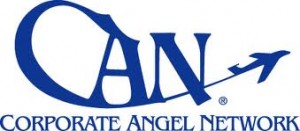Celebrate Science, Technology and the Exploration Spirit
Written by thomas · Filed Under Aeronautics NewsSeptember 22, 2008
‘NASA at 50’
HAMPTON, Va., Sept. 22 /PRNewswire-USNewswire/ — NASA invites the
public to celebrate our mid-century mark. Our astronauts have circled the
world, walked on the moon and built the International Space Station. Our
advances in aeronautics have improved civil and military aircraft and taken
us to the aeronautical frontier, traveling 10 times the speed of sound. We
have studied Earth, visited the planets, imaged the universe and peered
back to the beginnings of time.
On Tuesday evenings throughout October, we invite you to relive some of
these accomplishments by joining us for a lecture series at the Virginia
Air and Space Center in downtown Hampton. Each lecture begins at 7:30 p.m.
and is FREE and open to the public.
TUESDAY, OCTOBER 7
NASA Human Spaceflight: Past, Present and Future
Kenneth S. Reightler, Jr., Former Astronaut, now Lockheed Martin V.P.
Experience the human journey into space — from the early beginnings at
NASA Langley, through the successful moon landings to current day
operations on the Space Shuttle and International Space Station — with
someone who’s been there. Reightler spent eight years as a NASA astronaut
and piloted two shuttle missions before joining Lockheed Martin Space
Systems Co. Look ahead with me, says Reightler, to the future of NASA and
human spaceflight.
TUESDAY, OCTOBER 14
Exploration of the Moon and Planets – A New Perspective on Earth
Dr. James W. Head, Distinguished Professor of Geological Sciences,
Brown University
Sputnik completely changed our perception of Planet Earth. Since then,
NASA has systematically explored the moon, Mercury, Mars, Venus, comets,
the asteroid belt, Jupiter, Saturn, Uranus, Neptune and their satellites.
As a result, says Dr. Head, we have a new understanding of how Earth and
other planetary bodies formed and evolved, and we now have clues to where
we are heading in the future. From his work on the Apollo program to
serving as co-investigator for the MESSENGER mission to Mercury, Dr. Head
has studied Earth in the context of the Solar System for nearly five
decades.
TUESDAY, OCTOBER 21
Why NASA and Earth Science are Vital for Human Wellbeing
Dr. Jeffrey D. Sachs, Director of The Earth Institute, Columbia
University
Our generation’s greatest challenge is to live both peacefully and
prosperously and sustain our crowded planet. NASA technology, says Dr.
Sachs, is at the very center of much of what we know and need to further
understand Earth’s climate, water system, carbon and nitrogen cycles and
the functioning of our ecosystem. Renowned for his work in economic
development, environmental issues, poverty alleviation, debt cancellation
and globalization, Sachs has been named one of Time magazine’s 100 most
influential people in the world.
TUESDAY, OCTOBER 28
50 Years of NASA Aeronautical Research
Roy V. Harris, Former Director of Aeronautics, NASA Langley Research
Center
When NASA was created in 1958, the National Advisory Committee for
Aeronautics (NACA) has been in existence for 43 years and was the
unchallenged world leader in aeronautics research and technology
development. Changing NACA to NASA doubled its mission, but did not alter
the new agency’s commitment to improving civil and military aviation.
NASA’s aeronautics research has covered nine decades, says Harris, and is
critically important to our nation’s transportation, defense, economy and
its competitiveness in a global world.
Hampton Roads holds a seminal place in this country’s aerospace
history. With the creation of NASA, Langley Research Center in Hampton
expanded its mission to include space research. Langley was NASA’s original
field center and the training location for the original astronauts. Project
Mercury, America’s inaugural man-in-space program, was conceived and
managed in Hampton. Today, Langley’s mission is three fold: exploration,
science and aeronautics.
For more information on the October lecture series: “NASA at 50: A
Celebration of Science, Technology and the Spirit of Human Exploration,” go
to
http://shemesh.larc.nasa.gov/Lectures/sigma/sigma.htm
For more information on NASA programs, go to
http://www.nasa.gov
NASA news releases are available automatically by sending an e-mail
message to Langley-news-requests@lists.nasa.gov with the word “subscribe”
in the subject line. You will receive an e-mail asking you to visit a link
to confirm the action. To unsubscribe, send an e-mail message to
Langley-news-request@lists.nasa.gov with the word “unsubscribe” in the
subject line.
SOURCE NASA
» Próximo Post - NASA and Air Force Work to Establish Hypersonic Science Centers
« Post Aneterior - U.S. Army Awards Raytheon-Boeing Team $125 Million Contract for Joint Air-to-Ground Missile
Comments
¿Tiene algo que decir?
You must be logged in to post a comment.







